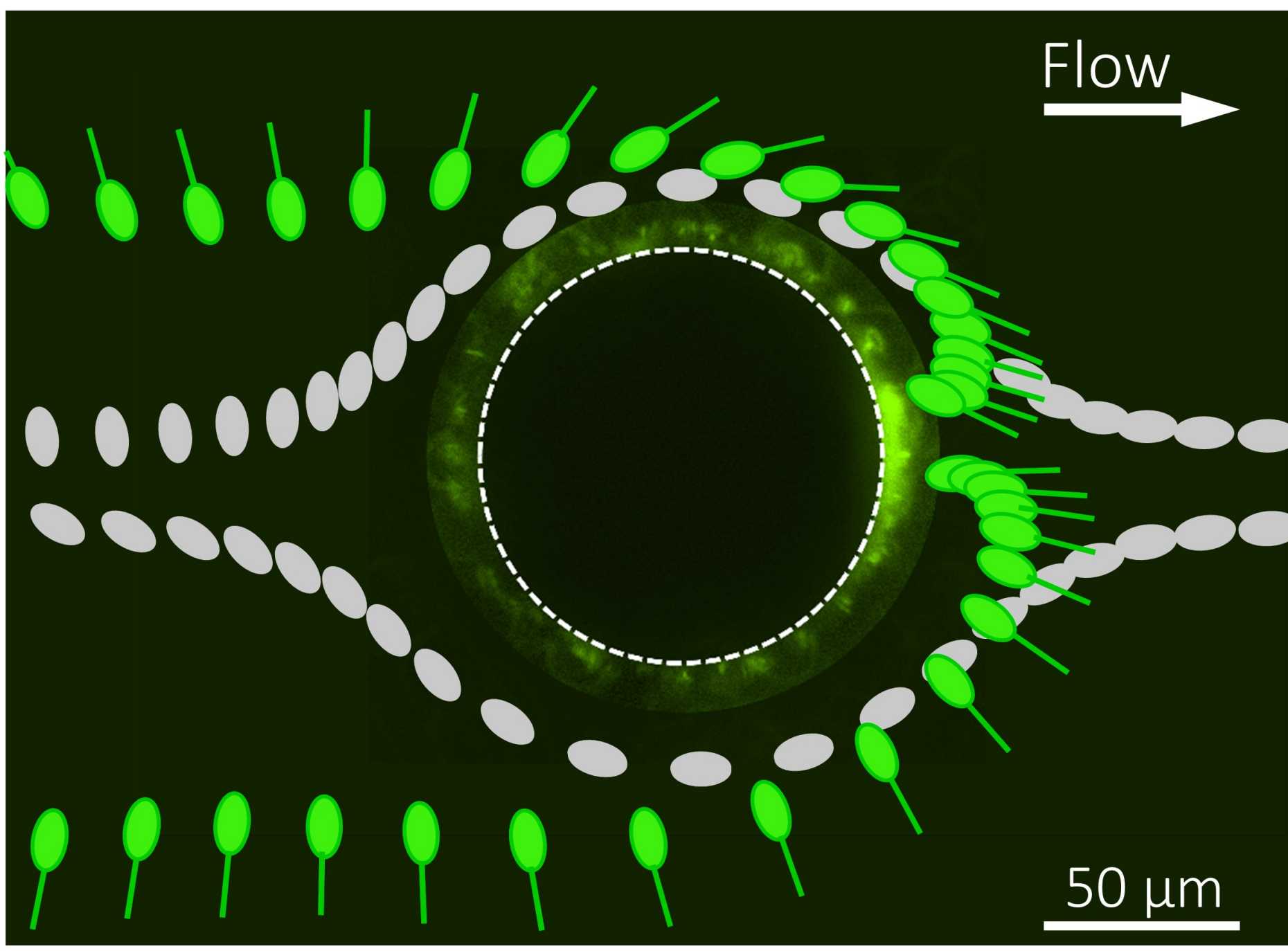Flow controls bacterial attachment to surfaces
Moist surfaces are rapidly colonized by bacteria. This initial colonization seeds the formation of biofilms, bacterial communities encased in a polymeric matrix that play critical roles in many environmental, industrial and medical applications.

In a recent paper in external page Nature Communications, Dr. Eleonora Secchi SNSF PRIMA Fellow in Prof. Roman Stocker’s group in the Institute of Environmental Engineering, and colleagues have shown that the location of bacterial landing spots on surfaces are governed by the flow of the surrounding fluid.
Using microfluidics experiments and a mathematical model, the researchers demonstrated that the magnitude and location of bacterial colonization on curved surfaces are determined by the local hydrodynamic conditions, coupled with the shape and motility of the bacteria. The fundamental physical nature of this interaction makes this is a very general phenomenon, allowing the model to be used to identify sites of preferential bacterial colonization on natural and artificial surfaces.
Colonization drives the initial development of biofilms and lays the foundations for bioclogging of porous structures, commonly found in groundwater systems, as well as in technological applications that exploit biofilms as bio-barriers or wastewater treatment systems.
